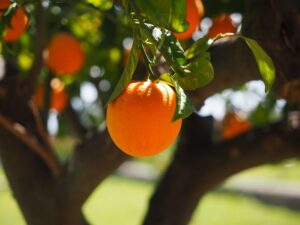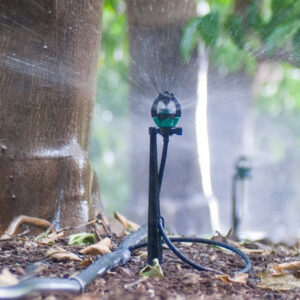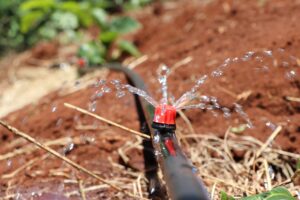Pixie Orange Farming And Irrigation
Pixie orange farming and irrigation in Kenya is a high investment, high returns farming venture. Pixies originate from California, USA where they were developed as a cross between oranges and tangerines. They are yellow-orange in colour, sweet and seedless fruits rich in vitamin C. They boost the immune system and increase collagen production which is great for the skin. In this piece, we answer commonly asked questions on pixie orange farming and irrigation by growers in Africa
1.How do you grow pixie oranges in Kenya?
They grow in most soils, but the best are deep (at least 18 inches or 42 cm deep) fertile sandy loams with a pH range of 6.5 – 7.3

Ripe pixie oranges on a tree
2. How do you plant pixie oranges?
The dimensions of the planting holes are 2ft x 2ft x 2ft. This allows for water conservation and deep root penetration as the tree grows. mix the top soil thoroughly with well decomposed manure especially in weak soils
3. What is the spacing for pixies?
Row to row 5M, plant to plant 4M to give an average population of 200 plants per acre. A mature full-sized tree tree is 6M – 9M tall, and equally wide with an extensive root system

A mature well spaced pixie orange crop
4. How long do pixie oranges take to grow out?
Pixie oranges take 2 years to their first fruiting season, but full maturity is between 3 -5 years
4. How many oranges will one tree produce?
The first fruits (30 – 50 fruits) come in the second year, then 250 -300 in the third to fifth years. By the eighth year, the tree bears 500 -600 fruits annually. To produce this commercial quantity all year round, irrigation must be undertaken
5. How many pixie orange trees per acre?
200 trees on average
How To Irrigate Pixie Oranges In Kenya
Pixie oranges require a high amount of water to grow because they are ever green. Under rain fed production, it will be at least 1,000mm of rain annually. However, to produce commercially, irrigation will be done to supplement rain. A tree will have 20 litres at planting, and thereafter, ensure that the soil is consistently moist, but not soggy. The root system must not be allowed to dry out, and neither should there be standing water. Irrigation is at the root zone, away from the trunk
Pixie Orange Farming And Irrigation
Methods
I. Sprinkler Irrigation
Micro sprinklers at the base of the plant are the most efficient or all overhead irrigation methods. Micro sprinklers are low-pressure, low to medium volume irrigation equipment that deliver water directly to the crop root zone. They provide full scale surface irrigation, and localised watering of trees

Micro sprinklers installed by Grekkon Limited in an orchard
II. Button drippers
This is the most water conserving and efficient irrigation system. The water loss to evaporation is less than that of micro-sprinklers, and it requires lower pressure to operate

A button drippers system installed by Grekkon Limited at work in a newly established fruit farm
